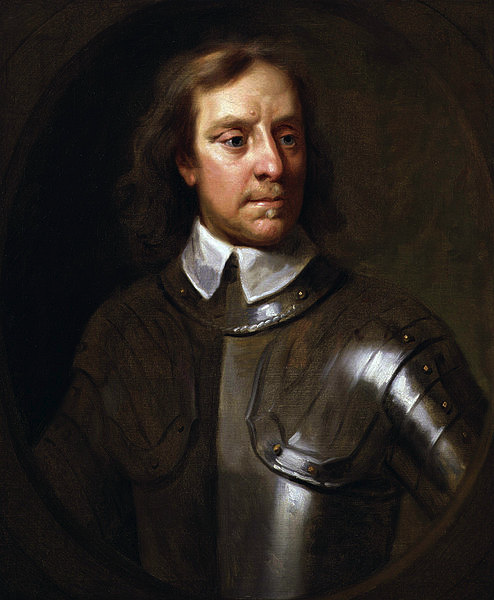Life in England under Oliver Cromwell
Oliver Cromwell is one of the most controversial characters in British history. After the execution of Charles I in 1649, Parliament was entrusted with governing England. However, Cromwell soon became dissatisfied with this system of rule. In 1653, with army backing, he sent MPs away and became the sole ruler of England. He was euphemistically named Lord Protector of the Commonwealth of England, Scotland and Ireland: in reality, he ruled England as a virtual dictator until his death in 1658.
Cromwell pushed for the execution of Charles. His signatures was third on the list of people who signed Charles I’s death warrant. One, probably fictional, story concerns Cromwell visiting Charlie's dead body. The guards around the body apparently saw a shadowy man - possibly Cromwell - lurking around the body. The man was heard muttering: "Twas a cruel necessity, twas a cruel necessity."
To understand Cromwell it is important to understand his religious beliefs. As a devout Puritan he was zealously religious and believed that people ought to lead their lives according to the Bible. The English Puritans wanted people to lead simple lives, stripped of the accoutrements of leisure and wealth. They believed that the reformation had not gone far enough, and promoted ‘purer’ forms of worship and religious practice. Cromwell was keen to encourage Puritan religiosity across England.

The Puritans encouraged industriousness: it was believed that hard work helped a person reach heaven. As such Cromwell believed that ‘pointless’ enjoyment was a sin while sports and entertainment were banned - theatres and inns were also closed. Plain dress was also enforced.
Sunday was a holy day under Puritan rule, which meant that work was not allowed - people who were found to be doing unnecessary work on a Sunday could even be put in the stocks, while even a walk to anywhere that wasn’t church could result in a fine.
In Medieval England, feast days were held to celebrate saint’s lives. In Cromwell’s England, monthly fast days - when people abstained from food - were held to encourage the English people to focus on God.
Cromwell divided England into 11 areas; each area was governed by one of Cromwell’s trusted major-generals, the majority of whom had served in the New Model Army with Cromwell.
One of the most extreme examples of Cromwell’s Puritan rule was that Christmas was banned. He wanted Christmas to be a purely religious celebration in which people contemplated the birth of Jesus. Puritans viewed with consternation eating and drinking on Christmas day. Festive food was removed from the streets which meant that the smell of a roasting goose could also bring trouble, while decorations, too, were banned.
However, Cromwell himself did not live a life of rigid self-control. He enjoyed music, hunting and bowls. He even allowed entertainment at his daughter’s wedding.
Cromwell abhorred Irish Catholics. He believed that they were all potential traitors who would willingly help any Catholic nation that wanted to attack England. During Cromwell’s rule, he tried to ‘tame’ the Irish through military force and terror. English soldiers conducted brutal massacres at Drogheda (September 1649) and Wexford (October 1649). Irish children were sent to the Americas to work as slave labourers in the sugar plantations: more than 100,000 Irish children may have been sold as slaves in the 1650s.
By the time of his death, the English people were weary of Cromwell’s strict rules. He became a figure of hate in England. Cromwell died in September 1658. His coffin was escorted to Westminster Abbey by over 30,000 soldiers. Was this a mark of respect for the man who had formed the elite New Model Army? Or was the army concerned about the coffin’s safety in a city which had grown to hate Cromwell?
Cromwell was buried along with the kings and queens at Westminster Abbey. However, when Charles I’s son Charles II came to the throne after the restoration in 1660 he ordered for Cromwell’s body be dug up from the ground and he was put on trial as a traitor and regicide. He was found guilty and symbolically hanged from a gallows at Tyburn (near Hyde Park, London). What happened to his body after that has remained a mystery.
See also: Oliver Cromwell
MLA Citation/Reference
"Life in England under Oliver Cromwell". HistoryLearning.com. 2025. Web.
